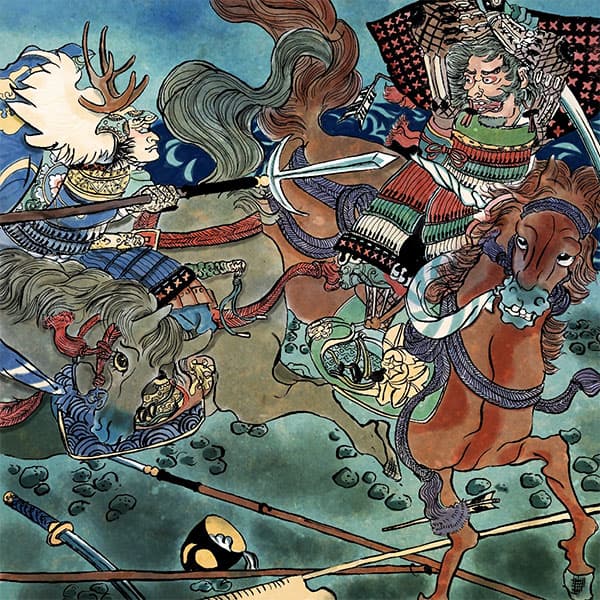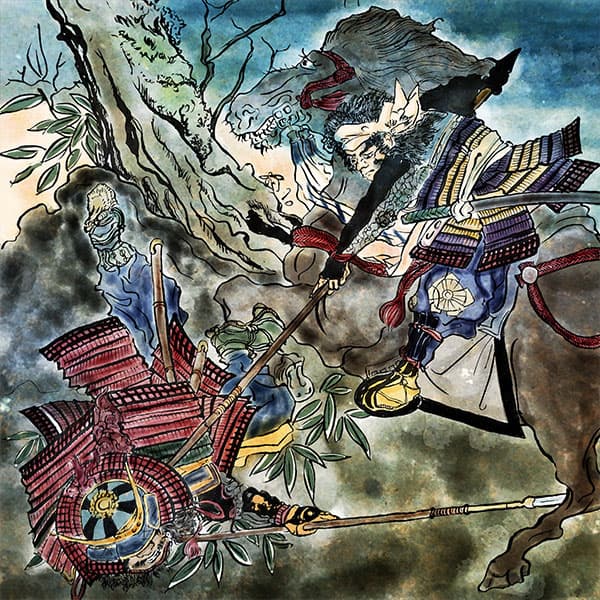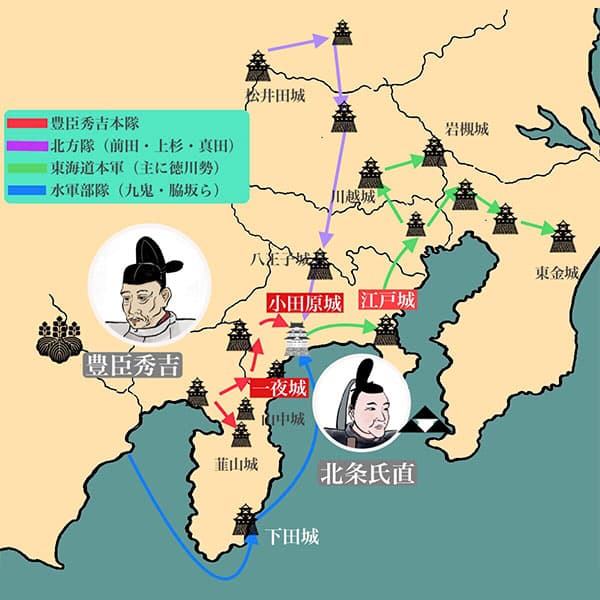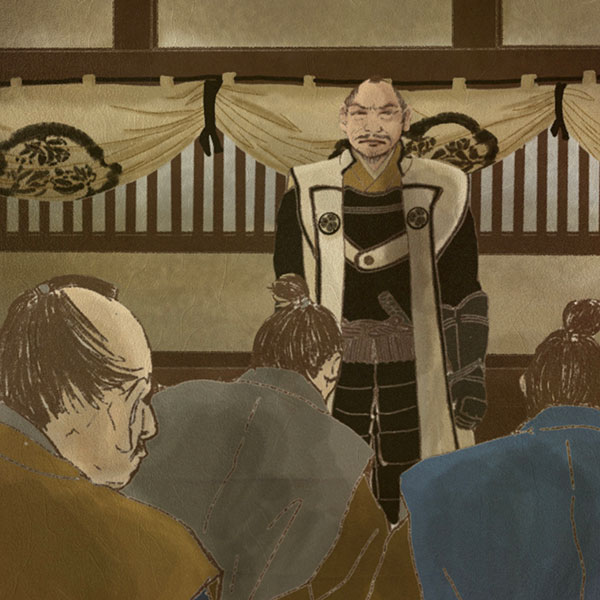Kazutoyo Yamauchi (2/2)Advancement in the Sengoku period and the merits of Naisuke
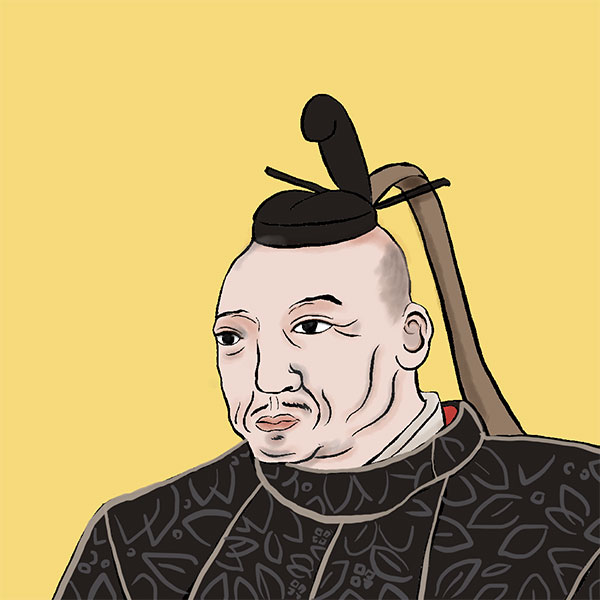
Kazutoyo Yamauchi
- Article category
- biography
- name
- Kazutoyo Yamauchi (1545-1605)
- place of birth
- Aichi prefecture
- Related castles, temples and shrines

Kochi Castle
Existing castle tower
Kakegawa Castle

Nagahama Castle
- related incident
One of the most famous stories about Kazutoyo and Chiyo is the one included in Tsuneyama Kidan.
Oda Nobunaga decided to arrange the horses, and Kazutoyo also decided to participate. However, Kazutoyo's horses were not good. So Kazutoyo wanted a famous horse (Kagami-Kurige), but it was too expensive to buy. When Chiyo realized this feeling, she took out her dowry (or hesokuri) from under her gift box and gave it to Kazutoyo. As a result, Kazutoyo was able to buy a famous horse and greatly honored him.
This story was passed down to the Meiji period, and was incorporated into the education of girls' high schools as a representative of good wives and wise mothers. This story of Kazutoyo and Chiyo is included in several historical sources, but we do not know how true or false it is. However, Chiyo is said to have lived a long life even after Kazutoyo passed away, and was a woman who did her best to keep the Yamauchi family alive.
Kisogawa Town Kuroda Castle Ruins and Kazutoyo Festival
Kisogawa-cho, Ichinomiya City, Aichi Prefecture was home to Kuroda Castle, which was ruled by the Yamauchi family.
The Kuroda Castle ruins are the current Kuroda Elementary School, but this is also the place where Kazutoyo Yamauchi was born. The Kisogawa Town Kazutoyo Festival is held on the third Sunday of September every year to commemorate this place that is associated with Kazutoyo. The main festival is the ``Sengoku Period Parade,'' where a procession of warriors led by Kazutoyo Yamauchi and Chiyo, dressed in armor, parades around.
In addition, the castle ruins have been constructed by recreating the gates of Kuroda Castle in the northeast corner of Kuroda Elementary School. A bronze statue has been erected in honor of Kazutoyo Yamauchi.
Nagahama Castle
The history of Nagahama Castle begins in 1573, when Hideyoshi Hashiba received the area around Nagahama from Oda Nobunaga for his success in attacking Asai. At the time of the reception, it was called Imahama, and the name was changed to Nagahama after Oda Nobunaga's character for Naga. At that time, Nagahama Castle was built by Hideyoshi along Lake Biwa, and was a water castle that could be accessed by boat directly from the castle.
Since then, the castle owner has changed frequently, and in 1583, Kazutoyo Yamauchi entered the castle as castle lord. Kazutoyo spent six years in this area until his territory was transferred to Kakegawa Castle.
However, the castle was completely destroyed by the Tensho Earthquake in 1586, and Yone, the only daughter of Kazutoyo and his wife Chiyo, died. A heartbroken couple lost their only child, but by chance they picked up a boy who had been abandoned on the street and raised him. This boy later became a priest of the Rinzai sect and took the name Shonan Soka. One of Shonan Soka's disciples was Ansai Yamazaki, a scholar from the Edo period.
Nagahama Castle was abandoned in 1615 after the Osaka War when the Naito family was transferred to Settsu Takatsuki. It is said that materials from the abandoned castle were used to build Hikone Castle, and Hikone Castle's Tenbin Yagura was moved from Nagahama Castle. The kitchen gate of Daitsuji Temple in Nagahama City is said to have been moved from the Otemon Gate of Nagahama Castle.
The remaining part of the castle was submerged in Lake Biwa, becoming the ruins at the bottom of Lake Biwa.
The current castle tower was restored in 1983, modeled on other castles, and is operated as a history museum.
Festivals at Nagahama Castle, etc.
- Spring Nagahama Hikiyama Festival
- It is a four-day festival held every year from April 9th to 12th in Nagahama City, Shiga Prefecture, in conjunction with the annual spring festival of Nagahama Hachimangu Shrine. This festival was originally held in the former Nagahama town, and children's kabuki is performed on stages on Mt. Nagato and 12 other floats.
Along with Kyoto's Gion Festival and Takayama City's Takayama Festival, it is considered one of Japan's three major float festivals, and has been designated as an Important Intangible Folk Cultural Property, and was registered as a UNESCO Intangible Cultural Heritage in 2016. - Spring Early Modern Castle Town Furusato Festival
- Nagahama is where Toyotomi Hideyoshi became the first feudal lord to own a castle. Nagahama Castle and its castle town are said to be the model for other castle towns around the country. This festival was started to liven up the area from its early modern castle town roots. The festival includes a parade of military commanders dressed up as military commanders and lectures on history.
- Autumn Nagahama Shusse Festival Toyokuni Festival
- Nagahama City was built as a castle town by Toyotomi Hideyoshi and prospered greatly. For this reason, the people of Nagahama greatly admired Hideyoshi, and after his death, Toyokuni Shrine was built to enshrine him. However, in the Edo period, the shrine was demolished and its worship was prohibited. Even so, the people of the town continued to worship the shrine in secret, with the town elders at the center. At the end of the Edo period and beginning of the Meiji period, Toyokuni Shrine was rebuilt, and even today, as a place connected to Toyotomi Hideyoshi, a festival is held every fall.
At the Nagahama Shusse Festival and the Toyokuni Festival, there are parades of samurai warriors and young children that simulate the triumphant return of the Battle of Shizugatake, and mock demonstrations using matchlock guns.
Kochi Castle
Kochi Castle, the last castle of Kazutoyo Yamauchi, is located in Kochi City, Kochi Prefecture.
Kazutoyo was given Tosa Province in 1601 due to the Battle of Sekigahara. Until then, Tosa Province was ruled by the Chosokabe clan, centering on Urato Castle near Katsurahama. However, if Urato Castle was used as a castle, it would be too small to open a castle town. Therefore, they decided to build a new castle at Otakasakayama Castle, which was on the site of the current Kochi Castle.
Construction of the castle began under Kazutoyo's reign, and it was completed under the second feudal lord, Tadayoshi Yamauchi, and was later named Kochi Castle. Kochi Castle was the domain office of Tosa Province ruled by the Yamauchi family throughout the Edo period.
The castle tower of Kochi Castle has three layers and six floors, and is said to have been built in the style of Kakegawa Castle, which was ruled by Kazutoyo. It is also one of the existing Japanese castle towers (12 existing castle towers), and the Otemon gate still exists. There are three castles that still have their castle towers and Otemon gates: Hirosaki Castle, Marugame Castle, and Kochi Castle, making them extremely valuable castles.
Kochi Castle ruled by Kazutoyo Yamauchi
- Kazutoyo Yamauchi and seared bonito
- This story takes place after Kazutoyo Yamauchi entered Tosa Province. In Tosa Province, there was a custom of eating bonito as sashimi, but Kazutoyo was concerned about food poisoning among his people and forbade eating them raw. It is said that the people of the territory started grilling only the surface of the bonito and eating it, saying it was not sashimi. There are various theories about the origin of seared bonito, but this story is also considered one of the good moods.
- Statues of Kazutoyo and Chiyo Yamauchi and Yamauchi Shrine
- Kazutoyo Yamauchi began to rule Tosa Province, and it was ruled by the Yamauchi family throughout the Edo period, so there are places in Kochi City that are connected to Kazutoyo Yamauchi. In Takashi-cho, Kochi City, there is Yamauchi Shrine, which is dedicated to Kazutoyo Yamauchi and Chiyo, the successive heads of the Yamauchi family. Additionally, there is a statue of Kazutoyo Yamauchi in Kochi Castle Park, created by Hakuun Motoyama, a sculptor from Kochi Prefecture who studied under Koun Takamura. There is also a statue of Kenshoin (Chiyo) leading a horse's reins at Kochi Castle.
Reread Kazutoyo Yamauchi's article
- related incident

- WriterTomoyo Hazuki(Writer)I have loved history and geography since my student days, and have enjoyed visiting historical sites, temples and shrines, and researching ancient documents. He is especially strong in medieval Japanese history and European history in world history, and has read a wide range of things, including primary sources and historical entertainment novels. There are so many favorite military commanders and castles that I can't name them, but I especially like Hisashi Matsunaga and Mitsuhide Akechi, and when it comes to castles, I like Hikone Castle and Fushimi Castle. Once you start talking about the lives of warlords and the history of castles, there's a side of you that can't stop talking about them.




